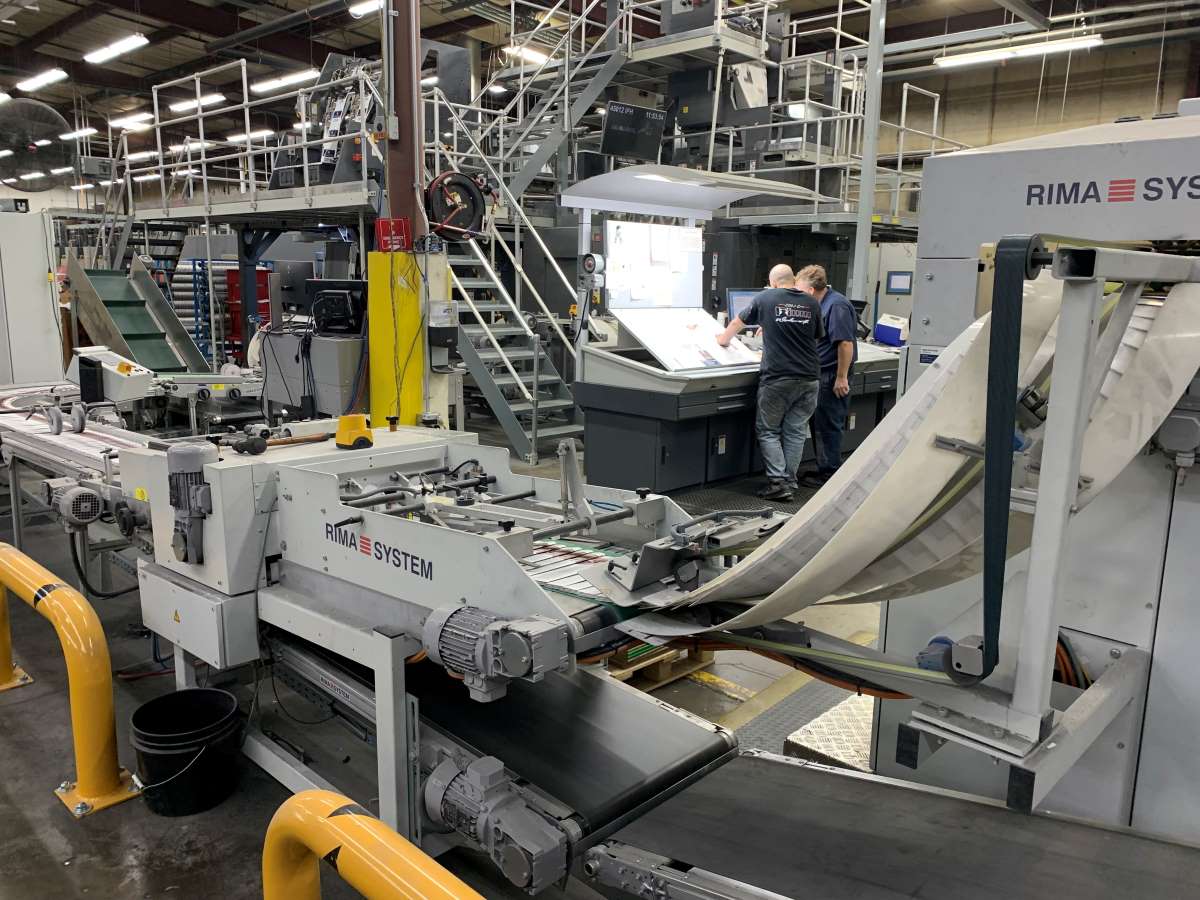

Have you ever wondered how your favorite novel or textbook goes from an initial concept to the finished product in your hands? The journey from idea to bookshelf requires the experience and talent of many different people using high-tech equipment and software.
This blog will dive into the process of printing a book, from the initial design process all the way to binding and packaging.
The Book Design Process
After a book is written and edited, there’s still work to be done before it can be taken to print. The author must make some decisions about how the book will ultimately look and feel. These decisions are usually the result of discussions between the author and publisher, and determine factors like cover design, size and typography, in addition to print-specific decisions like page layout, paper weight and binding.
It should come as no surprise, but book cover design is an important way to draw in potential readers. For that reason, authors and publishing companies put a lot of time and effort into designing the perfect cover for a book, usually by working with a skilled graphic designer.
Getting Started With Prepress
Once design details are finalized, the book’s publisher sends the files and specifications to the printer to begin the prepress process. Assuming the printer uses a non-inkjet printing method, like web or sheetfed, they will then begin the process of creating plates. Plates are made of laser-etched, recyclable aluminum and are used to transfer ink onto paper.
During the prepress stage, the book’s printer will identify and address any issues with the publisher’s design files before providing a digital proof. It’s up to the author and/or publisher to approve this proof before the official print run begins.
Printing Methods: Web or Sheetfed?
Now, let’s explore two major printing methods: web and sheetfed.
- Web Printing: Imagine giant paper rolls feeding a high-speed machine. Web presses excel at churning out large quantities of books efficiently. They use a continuous sheet of paper, known as a web, printing each color (usually CMYK – Cyan, Magenta, Yellow, and Black) in separate units. Efficient printing of large runs is where web printing really shines.
- Sheetfed Printing: Picture individual sheets being precisely fed into the press. While still an efficient printing method, sheetfed printing prioritizes quality over speed. It’s ideal for books demanding sharper details and perfect color reproduction and is often used for projects with intricate designs or photographs. Sheetfed presses are generally slower than web presses but can still handle substantial print runs.
Putting It All Together: The Binding Process
Once all the pages of the book are printed, it’s time to assemble the final product in a process known as binding. The binding process involves the following steps:
Folding and Collating: Those printed pages are meticulously folded and arranged in the correct order, forming signatures. Signatures are usually a group of 4-64 pages and are the basic building blocks of the book.
Binding: Signatures are brought together using various binding methods like gluing, stitching or sewing, depending on the publisher’s specifications. Quality binding ensures the longevity of the book. After being bound together, the stack of pages is known as a book block.
For information about the various types of book bindings, read our free Binding Basics ebook.
Trimming: The book block is then fed through an inline three-knife trimmer, a sort of high-tech guillotine designed for large stacks of paper used to trim the three unbound edges of the book block to the final trim size. The excess paper trimmings are collected and recycled.
Cover it Up: After being trimmed to the correct size, the book block is attached to the cover. There are two major cover options commonly used for books, including casebound (hardcover) and paperback (softcover). The cover board used in casebound books can be wrapped in a variety of materials for a unique finish, such as leather, cloth or paper, before the design is applied.
Out the Door: Packaging and Shipping
After making it through the binding process, the books are ready to head to their final destination! The finished books are carefully packaged in boxes and shipped to the publisher (or directly to the customer if the printer is handling fulfillment). The books are now ready to be enjoyed!
Print Your Unique Book With Walsworth
A quality printer is the most important factor separating a good book from a great one. Walsworth has been a force in the printing industry for 87 years, and our experienced staff and cutting-edge equipment allow us to create beautiful, high-quality books with a wide variety of applications and features. Walsworth is ranked as the number three book printer in the United States and Canada. If you’re ready to partner with a quality book printer, get in touch with us today!
